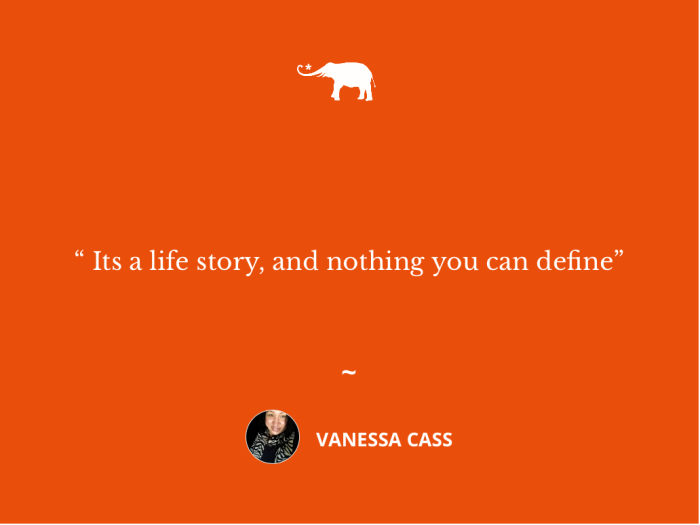By Vanessa Cass
The one question I have been most commonly asked throughout my life is, “What are you?”
As in, what’s my ethnicity.
I always found creative ways to avoid the question. Truth is, I really didn’t know what to say. I knew that my origins for the most part were German, American Indian, French, Louisianan, and so much more, but seriously, how could that be described in a simple term?
As the daughter of exiled, immigrant parents living in Maryland, we had pretty much assimilated the American culture. House in the suburbs, spoke English, and for the most part had American food at home.
Or was it…?
Looking back, it was indeed mostly mainstream, but we had accents of a land far away, a place I didn’t yet know: accents of garlic, thyme, onions, hot peppers and acid (by way of lemons, sour oranges or vinegar). Those were the constants of my palette, used in everything home cooked. They were the things that I didn’t find at friends’ dinner tables, local restaurants, or the school cafeteria.
They were the accents of my home.
When my parents suddenly decided to get divorced, our lives completely changed, and I, still a young girl, was abruptly transplanted from America to Haiti. I found myself in an alien world, full of squirrels and lizards, from Maple trees to bougainvillea. It was all so very beautiful, yet all so very different.
I vowed to never let go of what I knew, what was home for me. Haiti was always a “temporary situation,” at least in my mind, so there was no need for me to get attached to anything here, or learn the culture.
Food has always been, even at such a young age, a constant for me. It’s a tether for comfort, a lifeline.
One of the most definitive kitchen staples, if not to say the cornerstone, of Haitian cuisine is the mortar and pestle — the “thump, thump, thump” of solid mahogany, hitting hard inside a hollowed out piece of mahogany tree trunk, fashioned and polished by hand for hours or even days. The sound is dense and dank, pulverizing garlic, onions, chives, sea salt, the juice of sour orange, and of course the scotch bonnet pepper, permeating the air with a floral heat. It’s the holy trinity of acid, heat and spice — the base of every meal.
I remember one particular day, hearing that there would be fish, that a lovely big Red Snapper or “Sarde Rose” was bought. Then came a “shook, shook” sound as the cook scaling that very fish, carefully cleaning it out before plopping it in a big, plastic bowl. It was big enough to hold it without bending. Then she poured the mix of herbs, spices and juice that she had vigorously pounded in the mortar, all over the fish.
She gave a stern warning to the luring, curious cat not to go near it, or else he’ll end up in a bowl too, with extra hot pepper!
As the fish marinates, there is an earthy, thick aroma that fills the air, and the smell of cooked beans, carefully shelled and cleaned of random leaves and small stones the day before.
I tell you, if you’ve never seen this before, it’s like a deep state of contemplation, a very deliberate and soulful routine where your mind travels a million miles and a thousand years back or forward…
The beans are boiled until soft to make “Sos pwa,” a thick black bean soup to be eaten with white rice, and drizzled with the fish sauce in your plate at lunch time. If you were lucky they would boil or fry ripe plantains to go along with all of this, but unfortunately it was usually the green ones that I always found so difficult to swallow.
All of this would be done before 9 am, to be on the table by 1 pm.
As the years went by, my grasp of “the homeland, America” grew a little looser, at least where food was concerned. I found myself watching and learning about the cuisine here, then getting excited about the various and diverse meals being served on a daily basis.
Food is the glue of this culture. Everything revolves around it, or rather, it revolves around everything. Good news, let’s cook. Bad news, we have to cook. Nothing happening, let’s cook. A hurricane is coming, get cooking. A major earthquake, we have to share what we have.
There may be a revolution, what are we cooking….
Community is everything, the more the merrier! We’ll make it be enough no matter how little there is. Haitians are always willing to share and make a celebration out of anything and everything.
Haitian culture is borne of tragedy, colonization, and revolution. It’s a mix of Native Indian, West African, and French culture, and these are the elements that can be seen, smelled, felt and tasted in the pot. .
Over the centuries, the methods for cooking haven’t really evolved, it’s a labor of love. No fancy gadgets, no timing, or measuring. It’s unrefined yet complex and sophisticated in its rawness. It’s primordial. It’s a mix of emotions, a dance, pride, resilience, happiness, joy, and an ancestral memory of the history that has undeniably forever marked this land. It’s an incredible blend of hot, sour, tangy, salty, robust, anything but subtle. It’s a life story and nothing you can define. It’s a lot of this, and a lot of that, and more. Acid, heat and spice. And the beginning of every meal preparation, like a ceremonial rite to invoke and blend all the necessary ingredients, was, is, and will always be the mortar and pestle.
It’s not just a cooking technique, it’s a story. Everything that goes into it is one thing, but after it’s broken down and mixed into a paste or marinade, it’s suddenly something altogether new.
It’s Creole. Nothing more, nothing less.
It took me many years, many revolutions, and so many natural catastrophes to realize, living here is actually living in a mortar and pestle. It’s blue skies one minute and hurricanes the next. Harmony one day and a bloody revolution the next. It’s an ordinary, boring day and then an earthquake that shakes you physically and mentally to your core, forcing you to face a life change you can’t even wrap your head around. It’s having your breath taken away by beauty or horror and never having the words to explain it. These are all the ingredients that go into life here, this is the spirit of what goes into the mortar to be transformed by the pestle. It’s never been for the faint of heart. It just is.
So, “what am I?”
A mix of acid, heat and spice.
I’m a Creole.
Sent from Mail for Windows







Read 2 comments and reply